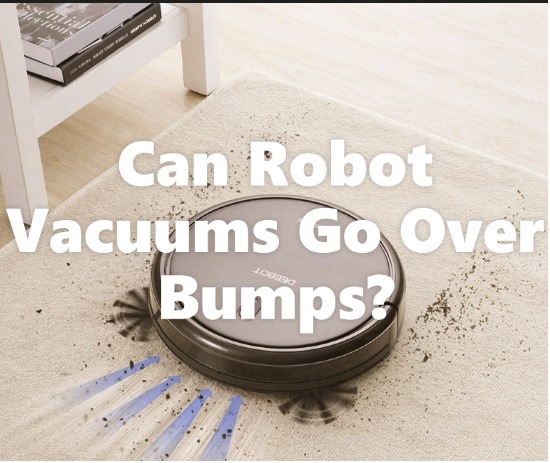Table of contents

Robot vacuums have become increasingly popular over the years due to their convenience and ease of use. However, one question that many people have is whether these devices can handle going over bumps, such as thresholds or rugs with high piles. In this article, we will explore the capabilities of robot vacuums when it comes to navigating over bumps.
Understanding the Types of Bumps
Before we delve into whether robot vacuums can go over bumps, it’s essential to understand the types of bumps that exist. There are generally two types of bumps that a robot vacuum may encounter:
- Small Bumps – These bumps are typically less than half an inch high and can be found on floors that have slight variations in height, such as between floorboards or tiles.
- Large Bumps – These bumps are generally more than half an inch high and are typically found at the threshold of a doorway or where a rug meets the floor.
For Normal Bumps
In general, robot vacuums can go over bumps. However, the exact bump size depends on how high you set the maximum height when programming your robot.
If you have carpeting in your home and want to make sure that it gets cleaned thoroughly, then we recommend setting your maximum height at 1 inch or less (or even 0 inches). This way any small objects like toys or socks won’t get stuck underfoot while vacuuming.
If you have hardwood floors or other types of floors with no rugs or carpets on them then there’s no reason why robots couldn’t go over 2 inches without any problems at all!
Also Read: How Often To Run Robot Vacuum?
Can Robot Vacuums Handle Small Bumps?
Robot vacuums can easily handle small bumps without any problems. These devices are equipped with sensors that detect changes in floor height and adjust their cleaning path accordingly. Some robot vacuums even have a feature called “cliff detection” that prevents them from falling off stairs or ledges.
Additionally, most robot vacuums have wheels or tracks that can easily traverse over small bumps. These wheels or tracks are designed to be durable and can handle the wear and tear of regular use.
Can Robot Vacuums Handle Large Bumps?
Robot vacuums may encounter difficulties when it comes to large bumps. In general, robot vacuums are not designed to handle obstacles that are higher than half an inch. This is because the wheels or tracks on these devices may not be able to climb over the bump without getting stuck.
However, some robot vacuums are equipped with larger wheels or tracks that can handle larger obstacles. Additionally, there are robot vacuums with a feature called “carpet boost” that increases suction power when the device detects it’s cleaning a rug with high piles. This feature helps the robot vacuum to clean the rug more thoroughly and navigate over the bump more effectively.
Tips for Using Robot Vacuums on Bumpy Surfaces
Here are some tips to keep in mind when using a robot vacuum on bumpy surfaces:
- Make sure the robot vacuum is designed to handle the type of bump you have. Check the manufacturer’s specifications to ensure that the device can handle the height of the bump.
- Clear any obstacles that may impede the robot vacuum’s path. This includes toys, shoes, or any other items that may get in the way.
- Consider using a virtual wall or magnetic strip to create a boundary around the bump. This will prevent the robot vacuum from trying to climb over the obstacle.
- If you have a rug with high piles, use a robot vacuum with a “carpet boost” feature.
Conclusion
In summary, robot vacuums can handle small bumps with ease, thanks to their sensors and durable wheels or tracks. However, when it comes to larger bumps, some robot vacuums may encounter difficulties. It’s important to choose a device that is designed to handle the type of bump you have and clear any obstacles that may impede the robot vacuum’s path. By following these tips, you can ensure that your robot vacuum effectively cleans your home without getting stuck on bumps.
